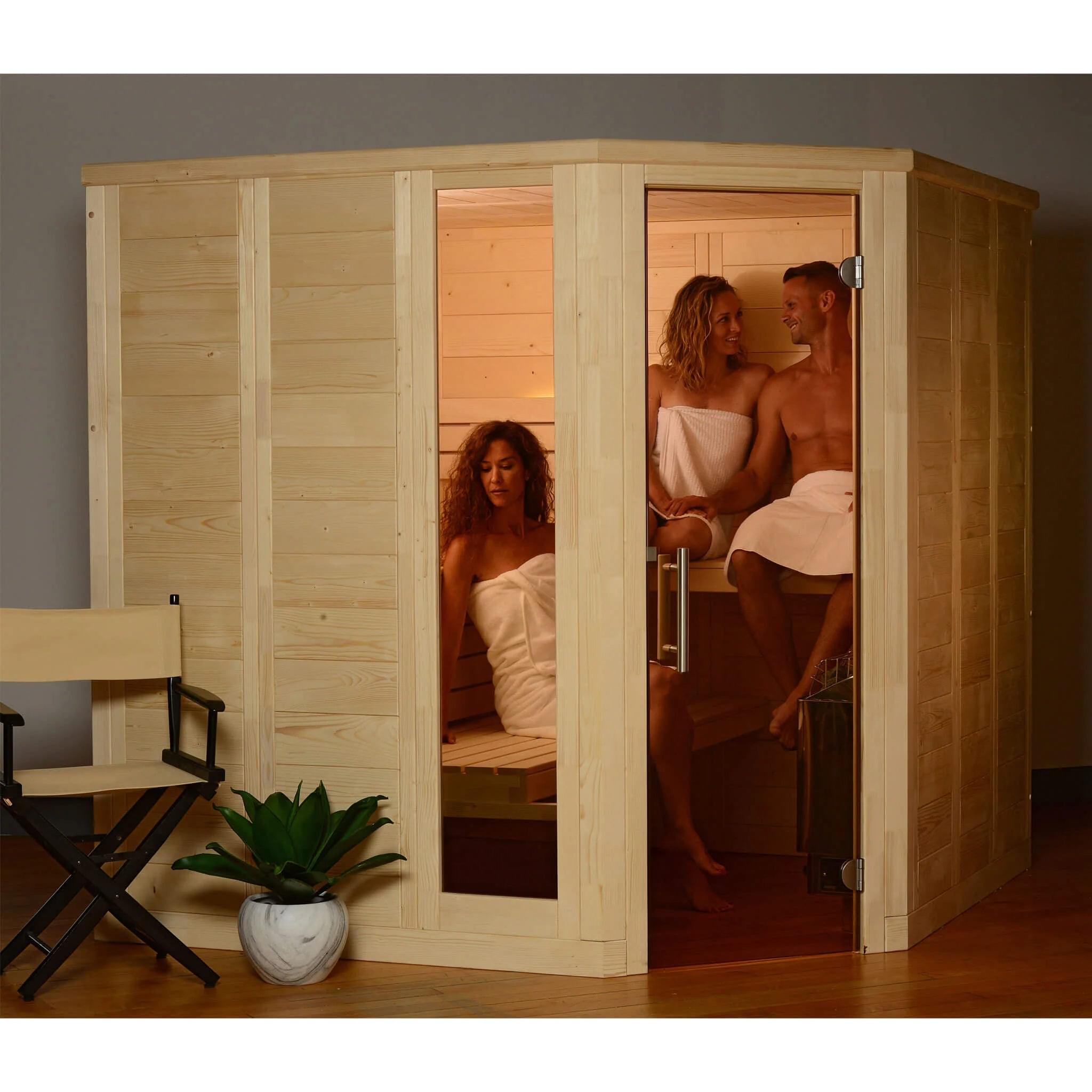What Does Traditional Sauna Do?
What Does Traditional Sauna Do?
Blog Article
Rumored Buzz on Traditional Sauna
Table of ContentsThe Single Strategy To Use For Traditional SaunaThe Of Traditional SaunaThe Best Strategy To Use For Traditional Sauna5 Easy Facts About Traditional Sauna DescribedAll about Traditional Sauna
The majority of the weight shed in a sauna is water loss and is re-gained upon rehydrating. Nevertheless, undeniably sauna can be a vital part of a healthy and balanced weight-loss program. To consider the distinctions between standard and IR saunas, I will divide these into verifiable, theoretical, and produced differences.Hence, the most popular point in the saunawhich goes to the ceiling straight over the sauna heateris generally between 185 and 190 F. Claims that a traditional sauna goes beyond 200 F is merely not real and not applicable for electric saunas offered in the US. The temperature for a far-infrared sauna is typically established in between 120 and 140 F; nevertheless, unlike the standard sauna, the objective in and IR area is not to attain a high temperature.
Since of this, the temperature level distinction is virtually unnecessary, because excessive sweating results in both sauna types, but the approach of warming the body is various. In an IR sauna the bather will feel warm and will sweat profusely, but at a lot reduced temperature levels. Traditional Sauna. Hence, if the objective is to spend longer durations of time in the sauna, the IR sauna is a great choice

Things about Traditional Sauna

When the high temperature is achieved, the aspects cycle on and off to preserve the high temperature. Traditional Sauna. The majority of traditional sauna users take pleasure in pouring water over the rocks to develop vapor to elevate sauna humidity levels. The advantages of pouring water over the rocks consist of: making the room much more comfortable, moistening the nasal flows, and enabling the use of aromatherapy by mixing important oils with the water
In a far-infrared sauna, the warm front penetrate the body to effectively heat up the body and raise the body core temperature level. To achieve this boosted temperature level, Far-infrared emitters develop infrared power which is close to the very same wavelength as that which the body normally emitsoften described as the "Vital Range" of 7 to 14 microns), so the power is well obtained by the body.
When the power enters the body, it triggers the body temperature to boost and eventually leads to sweating. In an infrared sauna it's crucial for the emitters/heaters to remain on nearly frequently. Because there is no mass of rocks to retain warm, the sauna will certainly cool down if the emitters turned off.
The Best Strategy To Use For Traditional Sauna
As stated above, the sauna bather in an infrared room wants to position himself before running emitters to obtain maximum take advantage of the heat. The home heating time for both spaces can be really various, depending upon how the areas are utilized. For a traditional sauna, a bather must allow 30-40 minutes for the space to accomplish a preferred temperature and to effectively pre-heat the rocks.
A well created sauna will usually accomplish a temperature level of 150-160 F in about 30-40 minutes. For hotter temperature levels, the room may need to heat for a longer duration.

Traditional saunas often tend to be larger (hence make use of even more electricity) than infrared saunas, although standard saunas are definitely offered in one and two individual sizes. For a two-person typical sauna, 5x6 or 5x7 size is most prominent. The top bench can conveniently seat two or three individuals and is additionally enough time to rest throughout the sauna session.
What Does Traditional Sauna Mean?
The ordinary cost per kWH of electrical energy in the U.S. is about $0.11 - Traditional Sauna, so a 4.5 kW heater will cost around $.50 to run for one hour, if the heating system runs continually for one hour. Normally a sauna heating system will compete 75% of the initial hour and 50% of subsequent hours on since the aspects cycle once the established temperature is achieved
A 2 person far-infrared area is typically physically smaller sized than a typical sauna, often about 4' x 4' or smaller sized. The IR heating system is generally 1.5-1.7 kW making use of a 120 volt 15 amp plug-in service. Because the room can be used earlier than a sauna room, we will think the area is utilized for to of an hour consisting of warmth up time.
Finally, there is a hardly ever reviewed distinction original site in the social experience in between the two spaces. While our culture has lost several of the social benefit of the standard useful content sauna experience, it can be very socially fulfilling. From family time in the sauna, to heart-felt discussions with considerable others, to sauna partiesthe typical sauna experience can cause intimate socializing.
A Biased View of Traditional Sauna
Many greater end infrared areas consist of tinted light therapy, sound systems and full-glass fronts.
Report this page